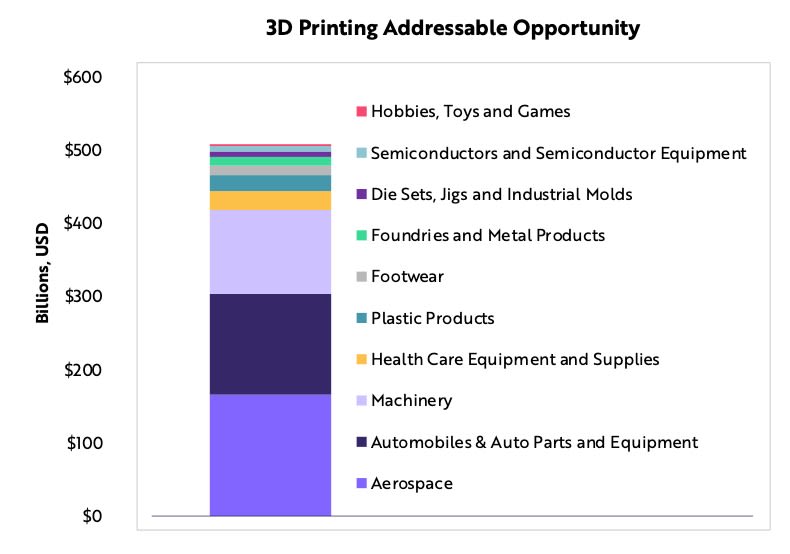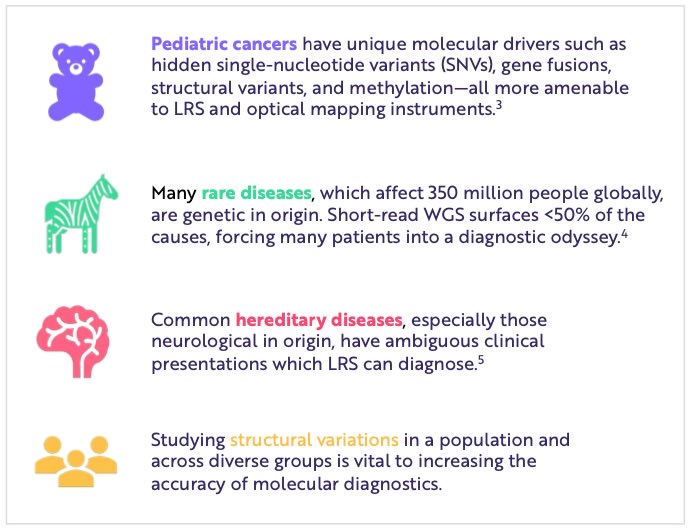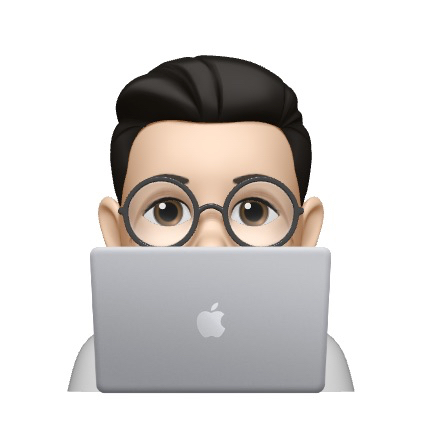This is the third installment in the series in discussing ARK invest’s Big Ideas publication. In the first and second part, I reviewed and shared my read to their ideas from Deep Learning to Orbital Aerospace. I will cover the last four ideas in this post.

3D Printing
ARK believes 3D printing will revolutionize manufacturing, growing at an annual rate of roughly 60% from $12 billion last year to $120 billion in 2025.
A few key observations by ARK:
- 3D printing found its new use during COVID-19, such as medical devices, personal protective equipment.
- There are three markets for 3D printing: prototypes, molds & tools, and end-use parts. The latter two parts have tiny market penetration and therefore have large potential - $30 billion and $490 billion respectively.
- 3D printing enables a few innovations mentioned before, such as autonomous technology, EV batteries, drones.
- When combining AI, it’s also possible to achieve complex and optimized designs that were not possible traditionally.

My confidence: 6/10. The hotness about 3D printing seems to fade a little. I remember back to about 2014, it’s very fancy and everybody wants to buy or at least play with a 3D printer. Haven’t seen much news in recent years. I do see its huge benefit in prototyping. The major challenge to penetrate the molds & tools and end-use parts requires 3D printing to be more efficient, cost-friendly, and accurate for prosumer-grade production. ARK didn’t do a very good job here in presenting how the 3D printing technology is advancing though. Relatedly, there’s a recent video showing 3D printing being used to build homes, which is quite impressive.
Long Read Sequencing
We estimate that long-read revenues will grow 82% at an annual rate, from $250 million in 2020 to roughly $5 billion in 2025.
In the field of DNA sequencing, researchers have to choose between Short read sequencing (SRS) vs Long read sequencing (LRS), with the trade-off between accuracy and completeness. SRS scans more accurately but could miss some mutations. LRS covers a longer sequence, therefore, has better completeness, but less accurate.
Recent advancement on deep learning has improved the LRS accuracy significantly. Further, the cost of LRS is reducing and can be on par with SRS by 2025 according to ARK.
My confidence: 7/10. ARK’s research seems quite convincing. Newborn screening is one of the best applications for DNA sequencing, which detects gene defection at an early stage and improves human life quality significantly.

Multi-Cancer Screening
- According to ARK’s research, the convergence of innovative technologies have pushed the cost of multi-cancer screening down by 20-fold from $30,000 in 2015 to $1,500 today and it should drop another 80%+ to $250 in 2025.
- As a result, the multi-cancer screening market should scale to $150 billion in the US. A multi-cancer screening protocol could avert 66,000 cancer deaths per year in the US, saving 1.4 million human life years.
Cancers, if diagnosed early, can be treated with a high success rate. Multi-cancer screening can detect a dozen early-stage cancers based on a single blood test. One challenge is the cost. Thanks to the rapidly declining costs, nearly $150 all age groups above 40 years could be screened for cancer cost-effectively, potentially saving up to 1.4 million human life years in the US alone.
My confidence: 8/10. It is truly amazing that modern medicine has advanced to the stage that cancer could be considered conquered to a certain degree. ARK certainly paints a bright picture for multi-cancer screening and how it can vastly improve human life expectancy.
Cell and Gene Therapy: Generation 2
New cell and gene therapy innovations could increase the total addressable market for oncology therapeutics by more than 20-fold.
ARK pointed out a few trends in cell and gene therapy:
- Traditionally, cancer therapies are tested in liquid tumors. FDA is likely to approve the first CAR-T therapy for solid tumors in 2025.
- Oncology trials are shifting from autologous to allogeneic cell therapies.
- Gene therapies could shift from ex vivo to in vivo editing
- Gene therapy and editing trials have increased five-fold since 2010
My conclusion: 8/10. This is a big deal. The medical advancements mentioned above are groundbreaking. It seems to reach a breakpoint that cell and gene editing will no longer be some exotic technologies that are still in the clinical trial but could benefit you and me in the next few years.
Closing Remarks
The above concludes the read of ARK’s 15 big ideas in 2021. A lot of them are pretty exciting. Just like a lot of people pointed out, they believe in ARK because they have transparency in mind and shared a lot of research regularly. Albeit the average investor won’t be able to dig into each theme and get the answers themselves, but they believe that the ARK team is doing the job for them to vet the disruptive innovations. We should look forward to the innovations and check back in a year and see if some of these ideas did break out and validate if ARK is really onto something.




Comments